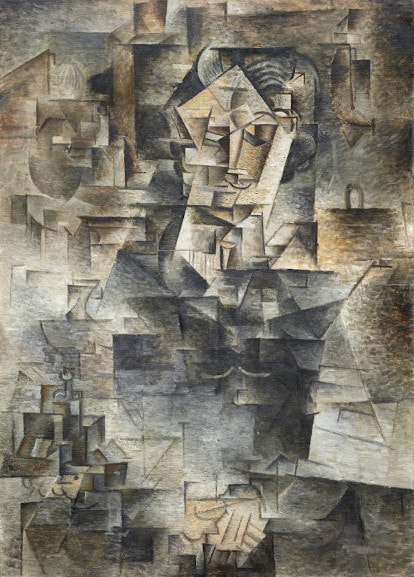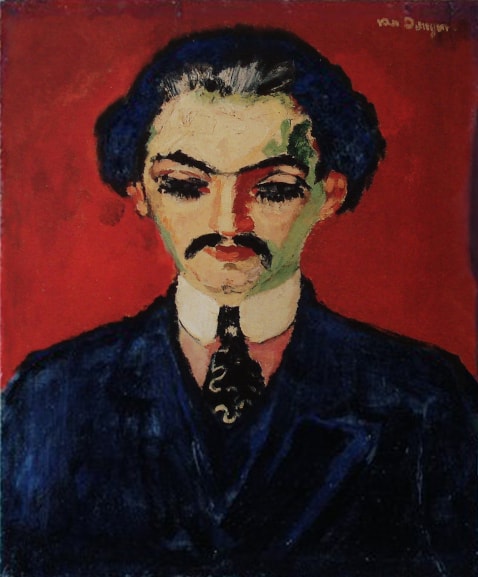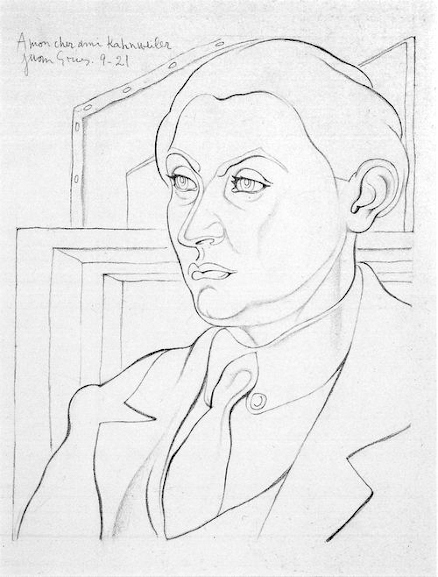The Story of Daniel-Henry Kahnweiler, an Art Collector and Dealer Who Championed Cubism
Shortly after Pablo Picasso and George Braques developed it as a style, Cubism became the most radical movement in early 20th-century art. Initially, innovative and harsh imagery characteristics of the movement were perceived by many as brutal, crude, and even visually repulsive. However, the movement got early seminal support from a few worthy men, including an art collector and dealer, Daniel-Henry Kahnweiler.
Thanks to the efforts of this German-born figure, the works of the Cubists gained wider popularity and the interest of other art collectors. Kahnweiler was among the first to fully understand the revolutionary domains of Picasso's Les Demoiselles d'Avignon and was interested in buying the iconic painting along with his other works.
In 1910, the Spanish master captured the art dealer in a captivating portrait that encapsulates the culmination of Picasso's most experimental years. This is not the only portrait of Kahnweiler produced by a prolific avant-gardist, a fact that tells much about his status in the art world of the time.

The Becoming of Daniel-Henry Kahnweiler
Daniel-Henery Kahnweiler was born to an affluent Jewish family in Mannheim in 1884. He grew up in Stuttgart, and while attending a German Gymnasium, Kahnweiler mostly prepared to study finance and philosophy. Under these circumstances, as a young man, he was equipped to become an art connoisseur and businessman.
The exposure to Parisian life and early employment in the family business awoke a new passion in Kahnweiler that would pursue him for the rest of his life. In 1907, he opened a small art gallery in Paris at the age of 23. The young man must have been inspired by his uncle, a successful stock brokerage businessman in London and a major art collector of traditional English artworks and furniture.

The Gallery
Kahnweiler decided to support many artists unrecognized at the time who later turned out to be groundbreaking figures, including Andre Derain, Andre Masson, Georges Braque, Kees van Dongen, Fernand Leger, Juan Gris, Maurice de Vlaminck, and a few other artists of the same generation. Instead of focusing on established practitioners, Kahnweiler promoted then emerging artists who were active in Montparnasse and Montmartre at the time. Shortly, he became an influential art dealer, shoulder to shoulder with Alfred Flechtheim, Paul Rosenberg, and Paul Cassirer, as well as a person who introduced innovative business methods in handling the artists that continue to be appreciated in the global art market up to this day.
Kahnweiler used to sign contracts with artists regarding the purchase of all of their work in order to obtain their economic stability and clear the path for the undisputed sprawl of their creativity. He spoke a lot with each about their work, took photographs of the paintings made, organized their exhibitions, and promoted each artist internationally. The art dealer also published Beaux Livres (beautiful books), which featured the works of contemporary writers followed by illustrations of contemporary artists – for instance, Picasso illustrated the works of Max Jacob.
In 1912, Kahnweiler gave his first interview on Cubism, claiming that his exhibition space was "as much a Cubist gallery as were the works of Picasso and the other Cubists." By forming a concise program, this prolific art dealer defined an unpromising aesthetic position but also achieved financial stability and creative development. Between 1907 and 1914, his gallery was a main Cubist hub, for both gathering and exhibiting.
During that time, the avant-garde painters and sculptors mostly presented their works to a wider audience within the Salon des Indépendants and the Salon d'Automne. Kahnweiler persuaded the artists from his batch not to show their works at these major exhibitions and, in doing so, removed them from the public eye. Eventually, Cubism became associated with the Salon Cubists exclusively.

The Impact of Daniel-Henry Kahnweiler
The outbreak of WW I definitely omitted the art currents and the ongoing avant-garde experiments but also forced numerous people, including Kahnweiler, who had to live in exile. The art dealer had to move to Switzerland since German citizens were considered aliens after French law. The possessions of many Germans based in France were nationalized, and that was the fate of Kahnweiler's collection; in 1914, the government confiscated it and sold it in several auctions at the Hôtel Drouot between 1921 and 1923.
While living out of Paris until 1920, the art dealer spent time studying and writing, an activity that grew into passion throughout his lifetime. Kahnweiler produced hundreds of books and major articles, among the most relevant ones being the Der Weg zum Kubismusand Confessions esthétiques. His writing production increased during another exile triggered by World War II.
Although he enforced Cubist production tremendously in terms of finances and logistics, Kahnweiler was a genuine connoisseur of each artistic practice and philosophy behind it. This particular knowledge made him the best interpreter whose contribution to art history was obscured for decades.
Kahnweiler never produced a full autobiography, and his voice was best captured through a series of interviews initially aired on French television, then published and translated as a book under the title Mes galleries et mes peintres (My galleries and my painters). In 1964, on the occasion of his 80th birthday, a Festschrift, a German term indicating an edited volume honoring one's work, was published with contributions by the leading art historians, philosophers, and artists who underlined the crucial role Kahnweiler had in the dissemination of Cubism rather as an art dealer then art historian. Such an image resulted from the plain fact that most of his works on aesthetics were either poorly translated or never translated into English.
In 1979, Daniel-Henery Kahnweiler died at the age of 94. His entrepreneurial domains were so propelling that by the 1950s, his art business was ranked on the top 100 French companies list. In 1988, Pierre Assouline published his biography. Although he was highly regarded by artists throughout his lifetime for his aesthetic sense and business domains, and respected among art dealers and art historians, a proper image of Daniel-Henery Kahnweiler's life and work is yet to be studied fully and properly understood.
Featured image: Kees van Dongen - Portrait of Daniel-Henry Kahnweiler (Portrait de Kahnweiler), detail, c.1907-08. Oil on canvas, 65 x 54 cm, Musée du Petit Palais, Geneva. Image via Creative Commons.
Can We Help?
Have a question or a technical issue? Want to learn more about our services to art dealers? Let us know and you'll hear from us within the next 24 hours.
